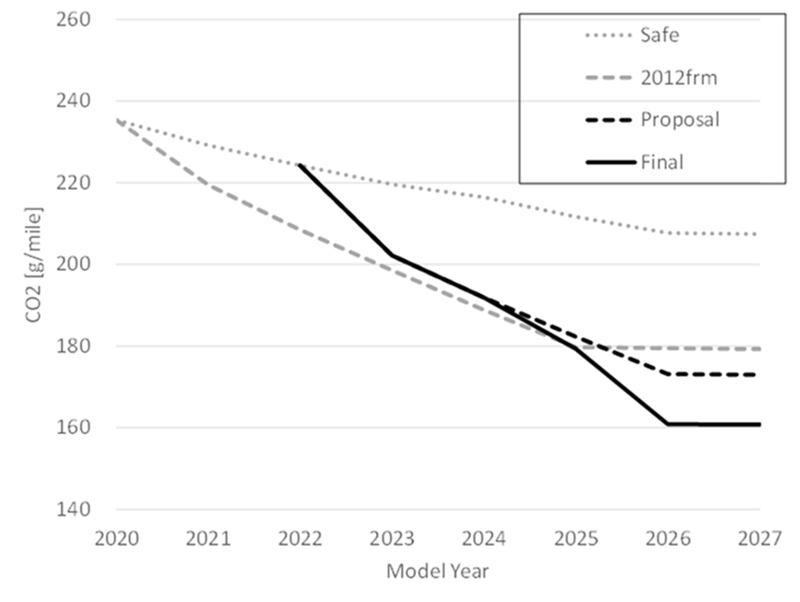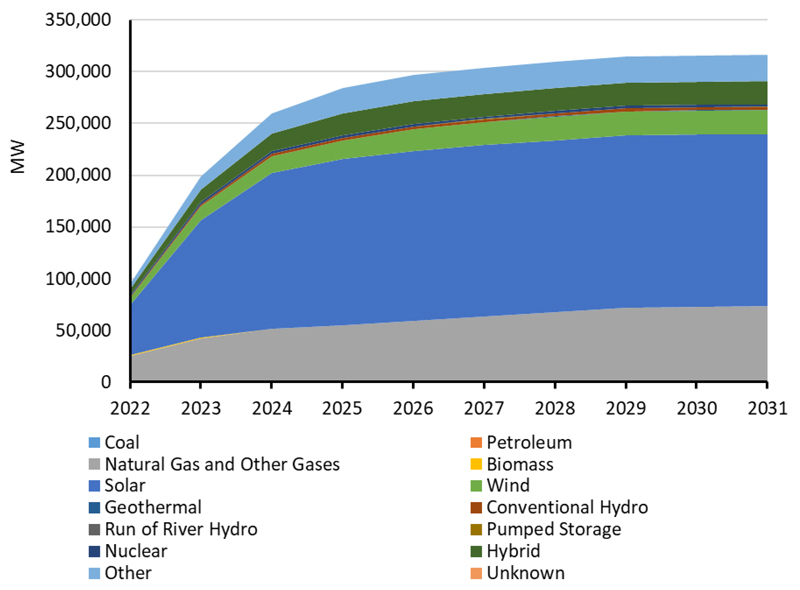U.S. Environmental Protection Agency Administrator Michael Regan on Monday rolled out stringent new vehicle emissions standards, stating confidently that getting the U.S. light-duty fleet to an average of 40 miles per gallon by 2026 would be achievable even without the electric vehicle tax incentives in the now-imperiled Build Back Better bill.
“When we look at the technical analysis we’ve done, the conversations with the automakers, what we’re proposing today we believe is historic and we believe is capable” of being achieved, Regan said in response to reporters’ questions at a signing ceremony for the new rules. “That’s not to say that we’re not going to continue to fight tirelessly for those incentives that are in the Build Back Better proposal. But nevertheless, we believe that we proposed a rule that is doable. It’s affordable. It’s achievable.”
Prospects for passing the $2 trillion budget reconciliation package screeched to a halt on Sunday when Sen. Joe Manchin (D-W. Va.), the critical swing vote in the evenly divided Senate, said he could not support the bill in its current form. (See Manchin Says ‘No’ on Build Back Better.)
The new rules replace the Safer Affordable Fuel Efficient (SAFE) rules put in place by the Trump administration in 2020. Under those rules, automakers would only have had to reduce tailpipe greenhouse gas emissions 1.5% a year and achieve a fleet-wide fuel efficiency of 32 mpg by 2026, according to an EPA fact sheet. The new rules call for emissions cuts of 10% over the SAFE standard in 2023, and then cuts of 5%, 7% and 10% in 2024, 2025 and 2026, respectively.
Transportation electrification will be essential for reaching those goals, with the EPA projecting that hybrids will account for 12% of U.S. light-duty vehicles by 2026, and EVs, 17%, according to the fact sheet.
“In model year 2026, these standards will be the most ambitious standards in United States’ history,” Regan said. “We estimate that through the year 2050, this program will save American drivers up to $420 billion on fuel costs, gas that you won’t have to put in the tank, and avoid more than 3 billion tons of greenhouse gas pollution.”
Gas savings would also offset the higher cost of electric or more efficient vehicles by about $1,080 over the lifetime of a 2026 model year vehicle, the EPA estimated.
But other speakers at the signing ceremony focused primarily on the impact the new rules would have on public health, especially for children at risk for asthma or other respiratory disease caused by air pollution from cars.
Nsedu Obot Witherspoon, executive director of the Children’s Environmental Health Network, spoke of her own experience, riding in an ambulance with her youngest child, who suffers from asthma. “When you see your child struggling to breathe, take their next breath, we all become helpless, unable to provide them the security that they deserve,” Witherspoon said.
“Asthma is still the No. 1 chronic illness among children,” she said. “If you cannot be healthy enough to be in school to learn, that creates another ripple effect related to a child’s educational journey, their ability to focus and remain engaged. Childhood asthma is also a key environmental justice issue and has been as African-American and Latinx children witnessed higher incidence rates of asthma.”
EV Stocks Tumble
The final rule Regan signed today is even more stringent than the proposed rule the EPA released in August, which called for a 2026 target for fleet efficiency of 38 mpg. But new standards also provide flexibility for automakers “to help them meet standards in ways that are most appropriate and cost effective for individual companies,” according to the fact sheet.
 EPA final fleetwide CO2 compliance targets, compared to the rules proposed in August and 2020 and 2021 rules. | EPA
EPA final fleetwide CO2 compliance targets, compared to the rules proposed in August and 2020 and 2021 rules. | EPAFor example, companies can carry over credits they may have accrued for “overcompliance” in 2017 and 2018 and apply them to meeting the 2023 and 2024 standards. Automakers can also receive extra “vehicle multiplier credits” for accelerating their rollout of zero- and near-zero emission vehicles, which could benefit the U.S. automakers, such as GM, that have already committed to a full transition to EVs.
At the same time, the rule sees a major role for vehicles with advanced, high-efficiency engine technology, predicting they will comprise more than half of the 2026 light-duty fleet.
But hitting the rules’ ambitious goals will require “a substantial increase in electric vehicle sales, well above the four percent of all light-duty sales today,” according to a statement from John Bozzella, CEO of the Alliance for Automotive Innovation, an industry group representing most U.S. automakers. “Achieving the goals of this final rule will undoubtedly require enactment of supportive governmental policies, including consumer incentives, substantial infrastructure growth, fleet requirements, and support for U.S. manufacturing and supply chain development.”
Significantly, EV stocks took a 7% tumble on Monday, according to CNBC, as the market reacted to Manchin’s abandonment of the bill.
Industry analysts ClearView Energy Partners are predicting that to get Manchin’s vote, a slimmed down Build Back Better might have to sacrifice some clean energy incentives. Manchin has previously spoken against one of the bill’s provisions: an additional $4,500 tax credit for union-built EVs.
Pedal to the Metal
Reactions from Democratic lawmakers and a key union leader supported the stricter standards. In an online statement, Sen. Edward Markey (D-Mass.) said he had urged the EPA to go beyond the August proposal and called for the agency to “put the pedal to the metal” to go even further in the next cycle of vehicle emissions standards.
Rep. Frank Pallone (D-N.J.), chair of the House Energy and Commerce Committee, similarly praised the stricter rules, but his email statement carefully skirted the status of Build Back Better.
“Paired with the investments in the bipartisan infrastructure law, this action will accelerate the process of transforming our transportation sector to the benefit of public health and the environment,” he said.
Ray Curry, president of the United Automobile, Aerospace and Agricultural Implement Workers (UAW), called the new rules a “win-win” for union members and other workers. “Well thought-out regulations, such as the Biden Administration’s emission rules today, will promote long-term U.S. investments while they protect and expand good-paying union jobs in vehicle production and advanced technologies that will allow manufacturers the flexibility necessary to meet these standards,” he said.


